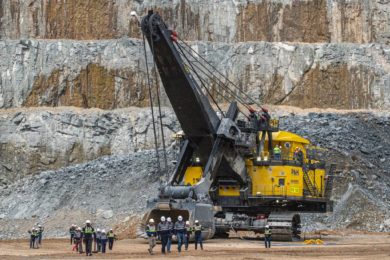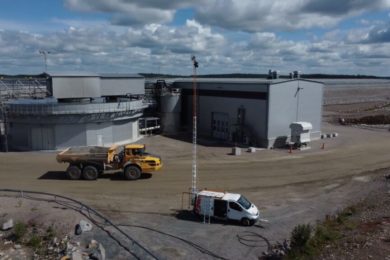Dräger says its X-am 5000 and X-am 5000 HC monitors provide advanced new features for mine safety. The US Mine Safety and Health Administration (MSHA) has approved them for use in underground and surface mines in America. These advanced monitors measure up to five toxic gases including methane.
The X-am 5000 High Concentration (HC) gas monitor with attachable pump measures methane up to 100% volume as well as oxygen and toxic gases, including CO, NO2 and H2S. Using the company’s patented DrägerSensors the monitor continuously measures and warns workers when concentrations above 5% volume of methane are present.
“With the current focus on mine safety, there is an increased emphasis on checking areas for potentially high concentrations of methane, above the 5% volume explosive limit” said Rick Wanek, Product Manager, Portable Gas Detection. “This is particularly important when checking behind seals, roof bolts and even the working areas of the mine. Measuring whether methane gas is present in the explosive range of 5-15% volume or higher concentrations is a critical safety issue. Reliable portable monitors are a key component for miners’ to perform safety checks.”
Also approved by MSHA is Dräger’s X-am 5000 personal gas monitor that continuously measures and warns workers when harmful concentrations of ases and organic vapors are present. DrägerSensors continuously monitor for methane and oxygen along with a variety of toxic gases, including CO, NO2 and H2S. Instrument configuration can be customized to meet changing operational requirements.
Among the smallest gas monitors available, both the Dräger X-am 5000 and the X-am 5000 HC provide more than 12 hours of continuous monitoring, making them suitable for long shifts and emergencies. A data logger records up to 1,000 hours of exposure for quality, risk and regulatory compliance. The X-am 5000 HC is recommended for environments with a risk of high concentrations of methane gas.
The advanced monitors have a hard-shell casing with a shock absorbing overmold that protects the monitor from water, dust, dirt and impact. At the same time, precise sensors make it possible to detect explosive hydrocarbons quickly. The sensors also resist fast pressure changes when going into the mines, an important advantage for the mining industry. A bump test station is also available for quick function and alarm testing.
“Potential and actual dangers must be identified quickly and prevented,” said Wanek. “If toxic or explosive gas is present, workers must be warned and given adequate time to leave the danger zone. Reliable portable monitors are a critical component of miners’ personal protective equipment.”









